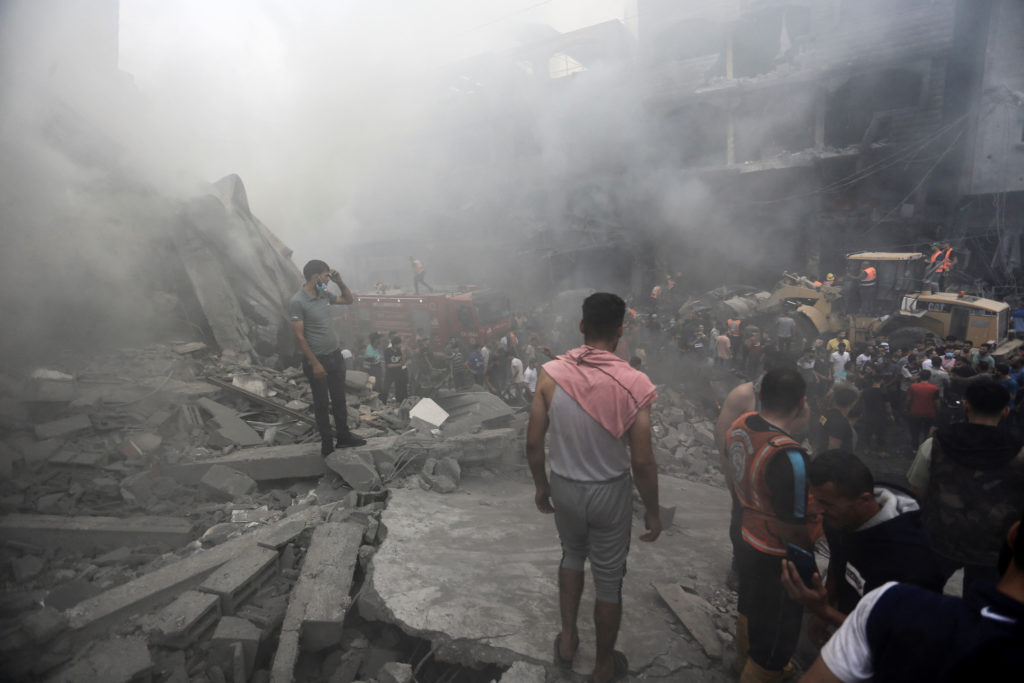Negotiations between Israel and Hamas have quietly resumed in Cairo, overseen by Egyptian mediators and backed by a newly proposed 20-point peace plan from former U.S. President Donald Trump. The discussions aim to establish a ceasefire, facilitate a prisoner exchange, and initiate a phased approach to de-escalation following two years marked by devastating warfare, which has claimed tens of thousands of lives.
Hamas officials have signaled a willingness to engage with the possibility of a ceasefire and the return of hostages, contingent upon Israel's commitments to humanitarian corridors for aid, international monitoring of any truce, and talks regarding Gaza's long-term reconstruction and sovereignty.
While Israeli military operations continue targeting what it describes as Hamas military infrastructure, Prime Minister Benjamin Netanyahu has reaffirmed Israel's position of defense until all hostages are returned and threats are eliminated. Marking the anniversary of the October 7 attacks, various solemn vigils across Israel call for reconciliation amidst remembrance.
The implementation of the Trump plan, recently circulated among key Middle Eastern capitals, focuses on significant aspects such as a mutual ceasefire, a prisoner-for-hostage exchange facilitated by Egypt and Qatar, and backed financial guarantees for reconstruction efforts.
These renewed diplomatic efforts have begun to ripple through global energy markets, reflecting increasing optimism among traders who believe in a potential stabilization of shipping routes, thus easing supply chain tensions. Observers note that this moment could serve as a litmus test for broader normalization efforts between involved nations, reminiscent of past diplomatic agreements.
As both Palestinian and Israeli communities grapple with years of profound conflict, there emerges a cautiously optimistic outlook as diplomatic channels reopen after a two-year impasse. The successful navigation of these negotiations could have far-reaching implications, potentially reshaping geopolitical alignments and economic conditions across the Middle East and beyond. The world now holds its breath, hoping for this fragile opportunity for peace to solidify.
Hamas officials have signaled a willingness to engage with the possibility of a ceasefire and the return of hostages, contingent upon Israel's commitments to humanitarian corridors for aid, international monitoring of any truce, and talks regarding Gaza's long-term reconstruction and sovereignty.
While Israeli military operations continue targeting what it describes as Hamas military infrastructure, Prime Minister Benjamin Netanyahu has reaffirmed Israel's position of defense until all hostages are returned and threats are eliminated. Marking the anniversary of the October 7 attacks, various solemn vigils across Israel call for reconciliation amidst remembrance.
The implementation of the Trump plan, recently circulated among key Middle Eastern capitals, focuses on significant aspects such as a mutual ceasefire, a prisoner-for-hostage exchange facilitated by Egypt and Qatar, and backed financial guarantees for reconstruction efforts.
These renewed diplomatic efforts have begun to ripple through global energy markets, reflecting increasing optimism among traders who believe in a potential stabilization of shipping routes, thus easing supply chain tensions. Observers note that this moment could serve as a litmus test for broader normalization efforts between involved nations, reminiscent of past diplomatic agreements.
As both Palestinian and Israeli communities grapple with years of profound conflict, there emerges a cautiously optimistic outlook as diplomatic channels reopen after a two-year impasse. The successful navigation of these negotiations could have far-reaching implications, potentially reshaping geopolitical alignments and economic conditions across the Middle East and beyond. The world now holds its breath, hoping for this fragile opportunity for peace to solidify.






















